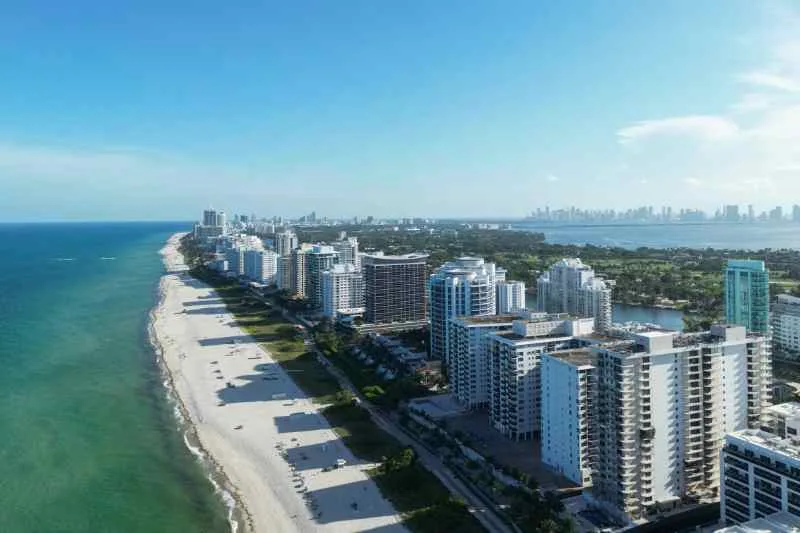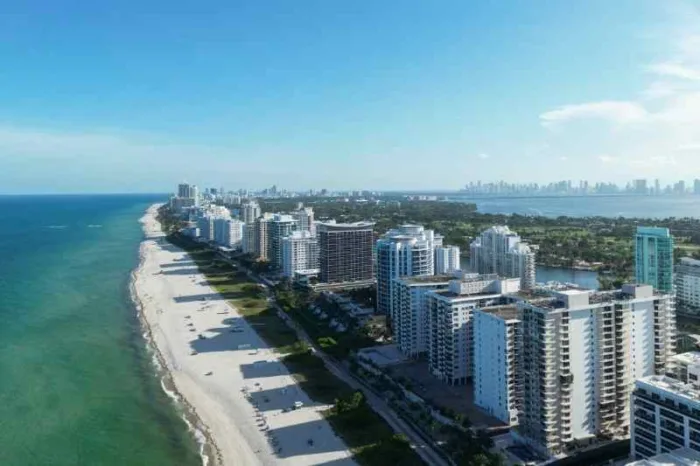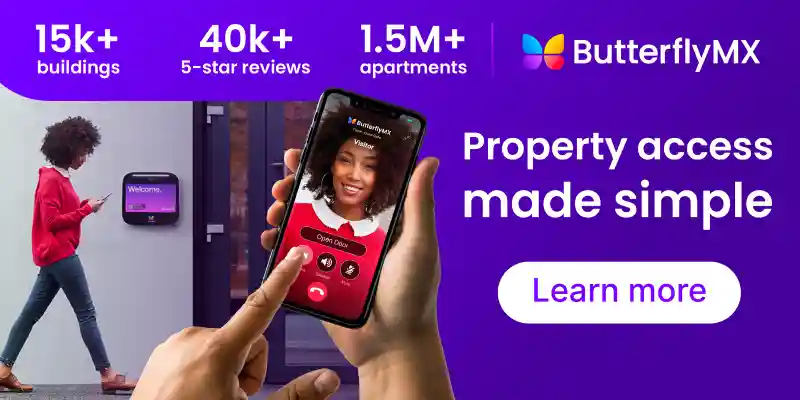Key takeaways
- Elevator access control in Miami enhances building security by limiting floor access to authorized users.
- Cloud-based systems let you manage elevator permissions remotely from any device.
- Professional installation ensures seamless integration with existing access control and elevator systems.
- Mobile credentials and touchless entry improve convenience for residents and visitors.

Elevator access control in Miami has become an essential part of modern property management. Whether you oversee a high-rise apartment, a mixed-use development, or a commercial office tower, you need to maintain security while ensuring convenience for residents, staff, and visitors. Miami’s skyline continues to grow, and with it, the need for smarter, more integrated building technologies that make vertical transportation secure and efficient.
Elevator access control allows you to regulate who can travel to specific floors and when. By combining elevators with access control technology, you can create a seamless experience that enhances both safety and user convenience.
In this post:
- Why access control matters in Miami
- Types of access control systems and technologies
- What an access control installer in Miami should offer
- Key considerations when hiring an elevator access control installer in Miami
- The most robust access control system in Miami
- Access control installers in Miami FAQs
Why access control matters in Miami
In Miami, access control is more than just a building feature. It is a critical layer of protection that helps you safeguard residents, employees, and property assets. The city’s dense urban environment, growing population, and luxury development boom have increased the need for advanced security solutions that do not compromise user experience.
When you install an access control system in your building, you gain centralized visibility and control. You can monitor who enters your property, when they arrive, and which areas they access. This visibility helps prevent unauthorized entry and ensures that every person who passes through your doors has the proper credentials.
In Miami’s competitive property market, offering elevator access control can also make your building more appealing to prospective tenants and buyers. Many renters now expect advanced technology features that improve convenience and safety. By integrating access control with your elevator system, you can create a modern environment that attracts high-quality residents and businesses.
Types of access control systems and technologies
There are several types of access control systems you can integrate with elevators in Miami. Each option offers different levels of functionality, connectivity, and scalability depending on your property type and budget.
Here are the top five types of technology for elevator access control in Miami:
- Key card and key fob systems
- Mobile access systems
- Cloud-based access control
- Biometric systems
- Video intercom access control
Discover how ButterflyMX works:
1. Key card and key fob systems
Key cards and fobs are among the most common access control methods. These devices store encrypted credentials that users present at a reader to gain access. When you integrate this technology with your elevator system, users can only access designated floors. This method works well for residential towers, offices, and hotels where you need to assign floor permissions to individuals or groups.
2. Mobile access systems
Mobile access is quickly becoming the preferred method for modern properties in Miami. These systems allow users to unlock elevators using their smartphones through a secure mobile app. Since credentials are stored digitally, they are harder to duplicate and easier to manage. You can issue or revoke access instantly, which improves efficiency for property managers and security teams.
Mobile access systems are ideal for mixed-use developments or multifamily properties where residents expect digital convenience. They also align with Miami’s growing emphasis on smart building technologies and sustainable practices, reducing the need for plastic key cards or fobs.
3. Cloud-based access control
Cloud-based systems provide centralized management through an online dashboard. You can manage user credentials, track elevator access logs, and integrate other security systems such as intercoms or cameras, from any device with an internet connection.
With cloud-based elevator access control, you can grant remote access to contractors, delivery personnel, or service providers without being on-site. This flexibility is particularly valuable in Miami’s high-rise buildings, where coordinating physical keys or cards can be time-consuming.
4. Biometric systems
Biometric access control uses fingerprint, facial recognition, or iris scanning technology to authenticate users. This type of system provides high security because credentials are unique to each individual. Although it may require a larger investment, biometric systems are becoming more common in luxury residential and commercial buildings throughout Miami.
Biometric technology ensures that only authorized individuals can access elevators and specific floors. It also eliminates the risk of lost or stolen credentials, creating a frictionless experience for users.
5. Video intercom access control
Video integration adds another layer of security by connecting your elevator access control system to cameras or intercoms. When a user presents their credential, the system records video footage for verification. This integration allows you to maintain detailed access logs and provides valuable evidence in case of security incidents.
What an access control installer in Miami should offer
When you work with an access control installer in Miami, you need a partner who understands both the technology and the unique characteristics of local properties. High-rise buildings, coastal weather conditions, and varying architectural layouts all require tailored solutions.
A professional installer should offer the following:
- Comprehensive consultation and assessment
- Experience with elevator integrations
- Support for cloud and mobile solutions
- Ongoing maintenance and support
- Integration expertise
Comprehensive consultation and assessment
Before installation, your provider should evaluate your building layout, elevator system, and security needs. This step ensures the final system integrates seamlessly with your existing infrastructure.
Experience with elevator integrations
Elevator systems require careful integration with access control technologies. Your installer should have proven experience working with elevator controllers, relay panels, and access management software to ensure smooth operation and compliance with safety standards.
Support for cloud and mobile solutions
Modern Miami buildings rely on connected, mobile-friendly systems. Your installer should provide access control solutions that integrate with mobile apps, cloud dashboards, and video management systems. This ensures your property remains future-ready.
Ongoing maintenance and support
Access control systems require regular updates and monitoring to perform optimally. Choose an installer that offers service contracts, remote diagnostics, and periodic system checks. Reliable after-installation support helps you maintain uptime and security compliance.
Integration expertise
Your installer should also be able to integrate elevator access control with other systems such as intercoms, security cameras, and keypads. A unified system simplifies management and provides a better experience for users and staff.
Key considerations when hiring an elevator access control installer in Miami
Choosing the right installer for elevator access control in Miami involves more than comparing quotes. You should evaluate each company’s experience, technical knowledge, and commitment to customer service.
Here are a few key considerations:
- Local experience
- Licensing and certifications
- System scalability
- Integration with building management systems
- User experience and accessibility
Local experience
Miami’s buildings are diverse, ranging from historic properties to cutting-edge skyscrapers. Your installer should have local experience working with high-rise elevators, parking garage systems, and beachfront environments where humidity and salt exposure can affect hardware performance.
Licensing and certifications
Ensure your installer is properly licensed and insured in Florida. They should also hold certifications from major access control manufacturers and elevator system providers. These credentials demonstrate technical competency and adherence to industry standards.
System scalability
Your access control solution should grow with your property. Whether you manage one building or multiple sites across Miami, your installer should offer scalable systems that allow you to add doors, elevators, or users without requiring a full replacement.
Integration with building management systems
Look for an installer who can connect your elevator access control system with your broader building management platform. Integration allows you to monitor HVAC, lighting, and security from a single interface, improving operational efficiency.
User experience and accessibility
Accessibility is crucial in modern buildings. Your system should comply with ADA standards and be intuitive for all users. Installers should prioritize touchless entry and mobile access features to enhance safety and convenience.
Use cases for professional installation
Professional elevator access control installation benefits many types of properties in Miami, and can make a positive impact on how your installation goes.
Here are some of the most common use cases:
- Multifamily buildings
- Mixed-use developments
- Commercial office towers
- Hotels and short-term rentals
- Student housing and university facilities
Multifamily buildings
In apartment or condo complexes, elevator access control helps you restrict floor access to residents and authorized guests. This prevents unauthorized visitors from wandering into private areas and enhances overall resident security. Residents can use their phones or credentials to access only their designated floors, while management retains oversight through access logs.
Mixed-use developments
Miami’s downtown and Brickell neighborhoods feature many mixed-use buildings that combine retail, office, and residential spaces. Elevator access control ensures each group of users can only reach permitted areas. For example, residents can access their apartments and amenities, while office workers can reach their designated floors.
Commercial office towers
For office buildings, elevator access control helps maintain a secure professional environment. Tenants can control employee access, and you can issue temporary credentials for visitors or maintenance staff. Cloud management allows property teams to oversee multiple floors remotely and quickly revoke access when necessary.
Hotels and short-term rentals
Elevator access control is valuable in hotels and vacation rental properties that experience short-term guest turnover. You can issue temporary digital credentials that expire automatically at checkout, reducing front desk workload and preventing unauthorized reentry after a guest’s stay.
Student housing and university facilities
In Miami’s growing student housing market, security is a top priority. Elevator access control helps maintain safe environments in dorms and student residences by limiting floor access to authorized residents. It also allows property managers to control entry during specific hours or events.
The most robust access control system in Miami
The most robust elevator access control system in Miami is ButterflyMX. As a trusted name in property technology, ButterflyMX offers smart solutions that simplify building access while keeping security at the forefront.
Here are the top benefits of ButterflyMX products for your building:
Integrated smart access
ButterflyMX combines Elevator Access with Video Intercoms, Keypads, and Security Cameras for unified property control. You can manage every aspect of your building’s access from one intuitive platform.
Cloud-based management
With ButterflyMX, you can control your Elevator Access Control System from anywhere using a web dashboard or mobile app. This flexibility lets you issue, revoke, or modify credentials instantly, which is ideal for busy Miami property managers.
Seamless integrations
ButterflyMX integrates with popular property management systems, security software, and third-party devices. Whether your building uses mobile credentials, key fobs, or PIN codes, ButterflyMX supports a range of access methods.
Reliable and scalable
The system is designed to support both small and large properties, making it an excellent choice for Miami’s multifamily, commercial, and mixed-use developments. With its robust architecture and easy-to-use interface, ButterflyMX provides both convenience and peace of mind.
Access control installers in Miami FAQs
Is elevator access control expensive to install?
The cost depends on factors like system type, building size, and integration complexity. However, the long-term benefits in security and management efficiency often outweigh the initial investment.
How do I find a reliable installer in Miami?
Look for companies with proven local experience, manufacturer certifications, and strong client reviews. Make sure they understand both access control and elevator systems to ensure seamless integration.

Get your free quote!
Fill in the form below, and we'll email you right back.
Want a free quote?
Fill in the form below, and we'll email you right back.
You’ll be redirected shortly...






